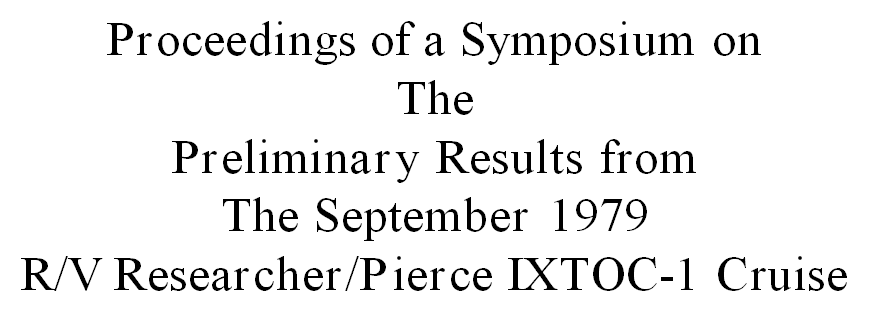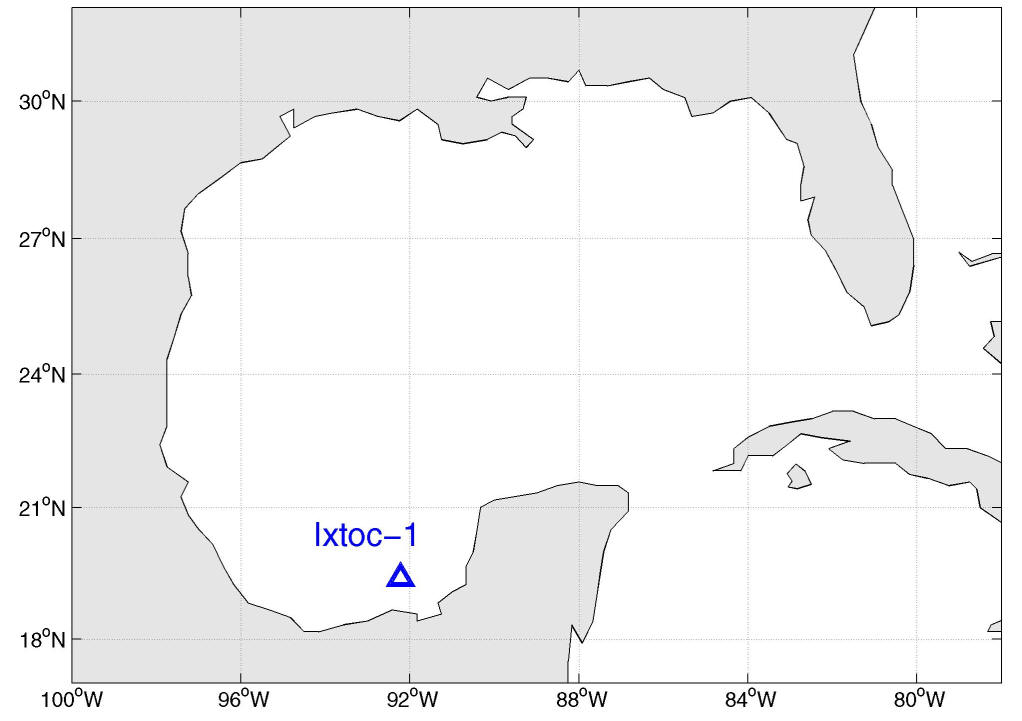


In 1979, the IXTOC-1 well in the southern Bay of Campeche suffered a blowout. The well, in waters of ~51 m depth, had been drilled to a depth of 3657 m by PEMEX, the state-owned Mexican petroleum company (see map). The rig collapsed and sank onto the wellhead area. The well had been producing 30,000 barrels per day. Two relief wells were drilled to relieve pressure and the well stopped leaking 23 March 1980. The spill was, at the time, the largest oil spill on record, with an estimated 140 million barrels of oil released (Patten et al., Nature 290, 235-238, 1981). Almost five hundred aerial drops of dispersants were employed. Prevailing winds caused extensive damage along the US coast with the Texas coast suffering the greatest.

Location of the Ixtoc-1 well.
In September, 1979, the NOAA Ship RESEARCHER and the Tracor-Marine owned and operated R/V PIERCE conducted a research cruise to the site of the IXTOC-I blowout and then proceeded along the coast of the western Gulf of Mexico. The cruise was part of NOAA's overall response to this oil spill. The specific mission of the cruise was limited to conducting research on the biogeochemistry of the spilled oil, e.g., the kinds and rates of chemical and microbial weathering.
This symposium volume provides a description of the research and of the initial results from the analyses of data and samples from that cruise. A complete listing of the types and numbers of samples collected is given in Appendix I of this report. Appendix II describes the sample coding used in tracking all samples collected during the cruise. We feel that the results described herein, on the analysis of these samples, are interesting and significant. Compounds resulting from photooxidation experiments conducted on IXTOC-I crude oil were the same as those found in situ in the area of the spill plume: Interestingly, these same compounds were formed by microbial action in microcosm experiments conducted in the dark on board the RESEARCHER, but in differing amounts and ratios. It is also clear that the entire microbial community responds to the spilled oil and that a population of petroleum degrading bacteria can grow rapidly enough to consume the oil at relatively rapid rates. However, the growth of these bacterial populations in the tropical surface waters of the Bay of Campeche was nutrient-limited. These facts 1ead to an interesting hypothesis that spraying oil spilled in such an environment with solutions of nutrients (fertilizer) might be an effective method for enhancing the natural ability of the ecosystem to cleanse itself and for combating future spills. It is at least an approach which should be tested. We hope that these and the other detailed results described in the individual pages of this volume are of use to the scientific community and welcome any comments or feedback of ideas individuals might want to put forward.
Report (pdf)